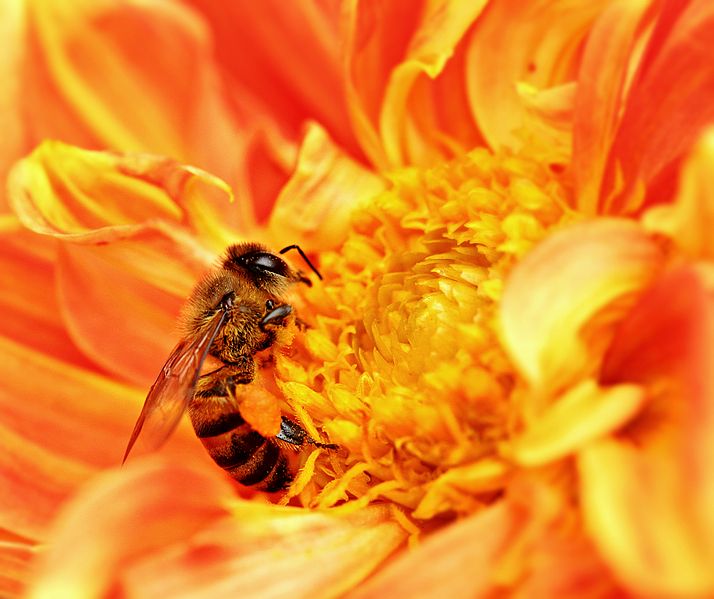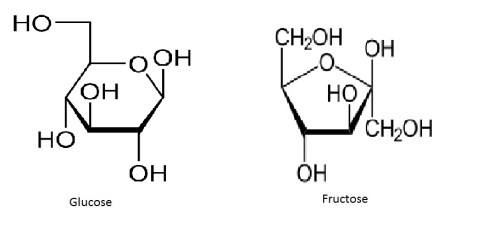Sorry about this being late – I completely forgot!
Anyway, back to business. Being late made me think of eating a slice of humble pie, and that would definitely be something sweet and what is sweet and delicious? Honey!
Honey is not only delicious, but it’s also good for you. Honey contains two main types of carbohydrates (which I will get to in a moment), and darker honeys, like Jarrah, have been to contain different minerals and trace elements, so it’s a sweeter way to get some nutrients than taking multivitamins.
There are two types of sugars in honey: glucose and fructose. These are two monomers that actually join together to form sucrose (ie. “sugar”). They both form ring structures (see below), but have different numbers of atoms in them – glucose has 6 in the main ring (forming a hexagon) while fructose only has 5 (forming the pentagon).
More atoms means more electrons, which helps increase attraction between molecules, meaning they are more likely to join together to create a solid. This means that glucose has a lower melting point that fructose and is therefore more likely to be solid at any given temperature. Therefore, if you have lots of glucose in your honey, it will crystallise very easily. If you have more fructose, it will be liquid. Essentially, the “runniness” of honey is dependent on the ratio of these two sugars.
So now you know how to make runny honey! What’s your favourite way to eat honey? I personally like it in my cup of tea, but what are your preferences? Leave a sweet comment below 🙂

Honeybee collecting nectar.
Image courtsey of Sajjad Fazel (http://en.wikipedia.org/wiki/File:Honey_Bee_takes_Nectar.JPG)

You must be logged in to post a comment.